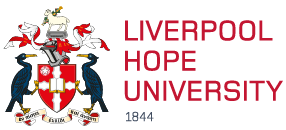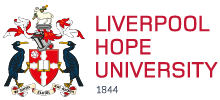Historian Dr Bryce Evans and The Real Junk Food Project Liverpool CIC will serve one hundred people a 100 year old menu, to experience what it was like to eat at a World War 1 National Kitchen - the first of a number of kitchens that Dr Evans will lead around the UK.
National Kitchens ran in in the UK between 1917 and 1919, offering simple meals at subsidised prices. A bowl of soup, a joint of meat and a portion of side vegetables cost 6d - just over £1 in today's money, while puddings, scones and cakes could be bought for as little as 1d (about 18p). The model returned in World War 2, when more than 2000 British Restaurants were opened between 1943-1947.
Constellations will be transformed into 1917 Britain, as guests will be served meals including meat and vegetable stews, bread rolls and puddings, whilst listening to jazz. 1917 fancy dress is optional but welcomed.
They will also be able to learn about the history of the National Kitchens, the public canteens which were part funded by government grants and run by local workers in communities dealing with food shortages.
The event is funded by the AHRC’s 'Gateways to the First World War' project.
The food for this month’s event will be provided by The Real Junk Food Project (TRJFP) Liverpool CIC - a social enterprise that intercepts surplus food from supermarkets and turns it into nutritious and healthy meals.
Gabby Holmes, Co-Director of TRJFP Liverpool says: “We are excited to provide the food for the Pop-Up - we work to reduce food waste, which wasn’t an issue during WW1- people learnt to use what they had.” Natalie Hughes-Crean, fellow Co-Director says: “all of the food that will be served would have otherwise gone to landfill.”
The Liverpool kitchen is the first of a number that Dr Evans will lead across the UK, to help food lovers learn about how the UK ate during World War One and to ask whether such a model could work today. Dr Evans will also bring the National Kitchens to Nottingham, Cardiff, Manchester and the Scottish Borders, and a final event in Liverpool.
To avoid the taint of charity associated with soup kitchens and handouts, the government ensured that National Kitchens took a distinct approach.
“Staff had to be well dressed, cooks experienced, and customers were not be patronised as members of the deserving poor; the décor was not to be chintzy, and gramophones and pianos were recommended for ambience,” says Dr Evans.
Dr Evans believes that we can learn from the past, and has spoken to MPs about reintroducing a similar model to help deal with the UK’s food poverty crisis.
He says: “Recreating a National Kitchen 100 years on raises questions about our approach to food poverty today. Is it enough for the government to point to food banks as a means of combating this problem? It is not just the very poor who are suffering. People working full time on low wages are struggling to eat.
“While our event is free, the National Kitchens were not; they just offered everybody an affordable means of eating. Middle-class professionals like clerks and office workers used the National Kitchens alongside working class families. Maybe we have a lot to learn from going back in time for dinner, and looking at the National Kitchen model, where everybody could sit down together for a meal in pleasant surroundings, without the stigma that comes from a handout. We want our 100 guests to experience this social way of dining, and we are sure that they’ll enjoy it.”
The Liverpool National Kitchen has sold out, but look out for other dates in Nottingham, Cardiff, Manchester and the Scottish Borders, and a final event in Liverpool.
WW1 National Kitchens – Facts and figures
• In May 1917, Queen Mary opened the first government-backed national kitchen on Westminster Bridge Road in London.
• By the end of 1917, national kitchens were popping up in almost every British town and city.
• At the height of their popularity in 1918, 363 national kitchens were doing business across the country, and wartime civil servants at the Ministry of Food eagerly discussed whether national kitchens might become a "permanent national institution".
• A bowl of soup, a joint of meat and a portion of side vegetables cost 6d - just over £1 in today's money. Puddings, scones and cakes could be bought for as little as 1d (about 18p).



